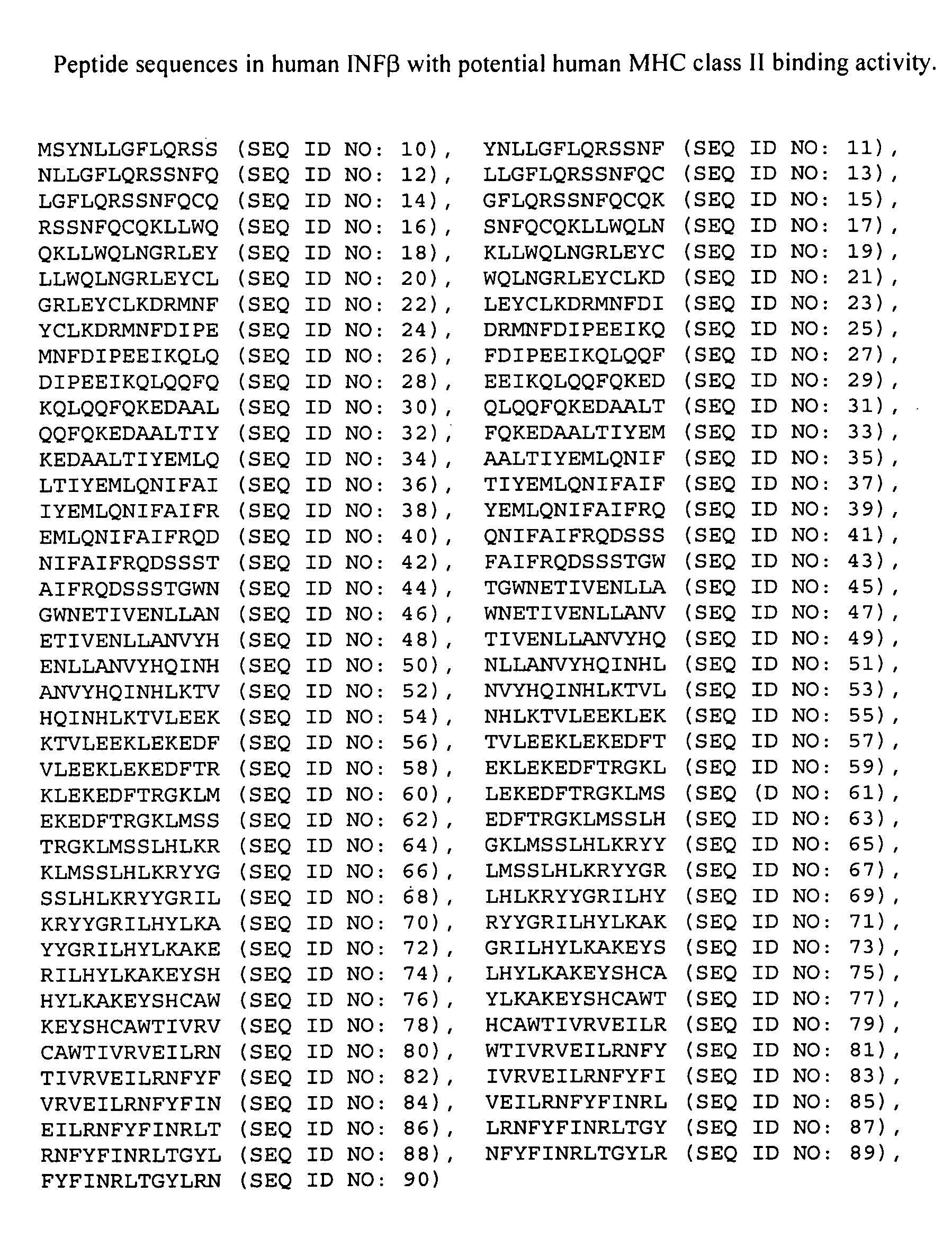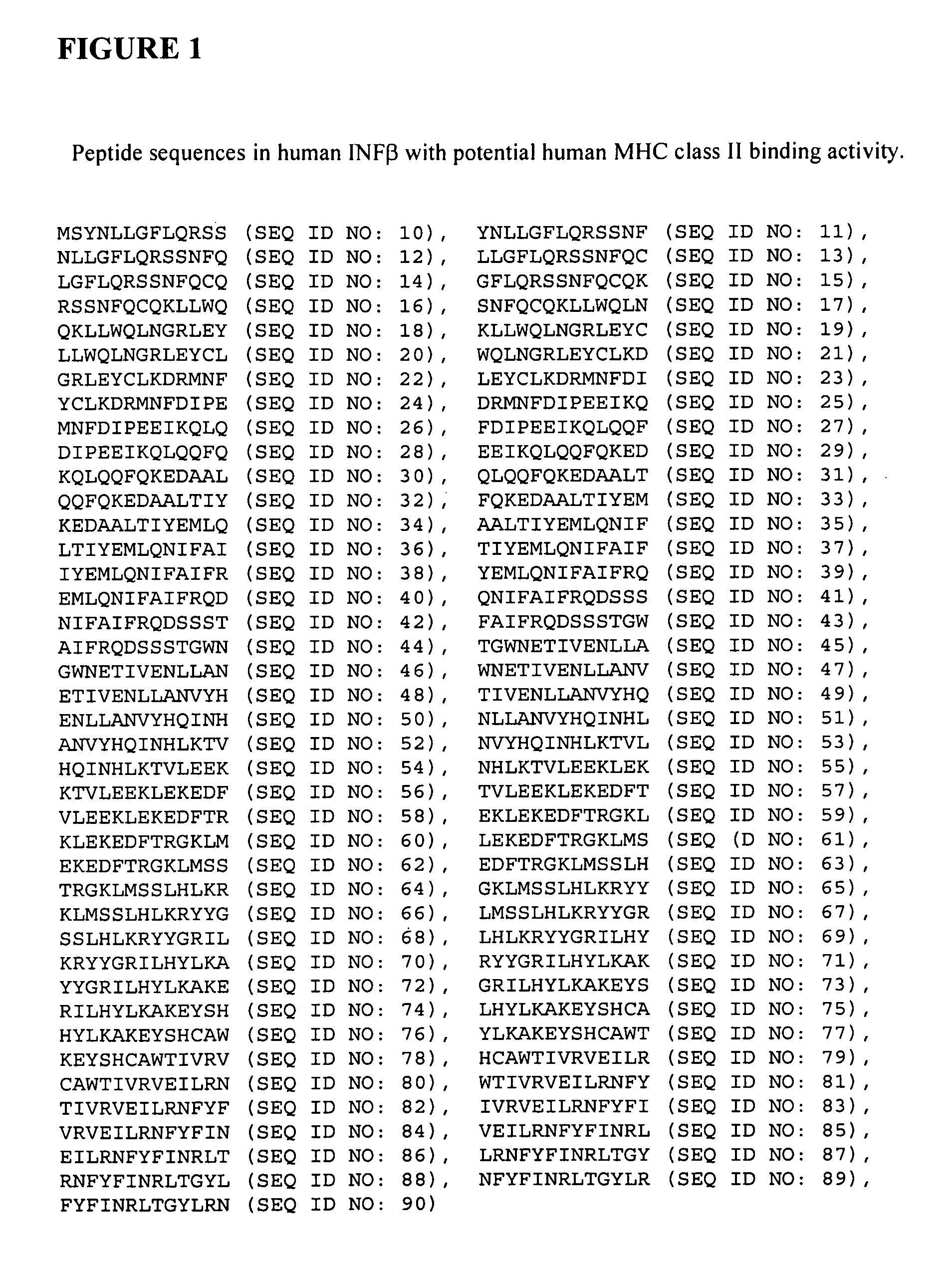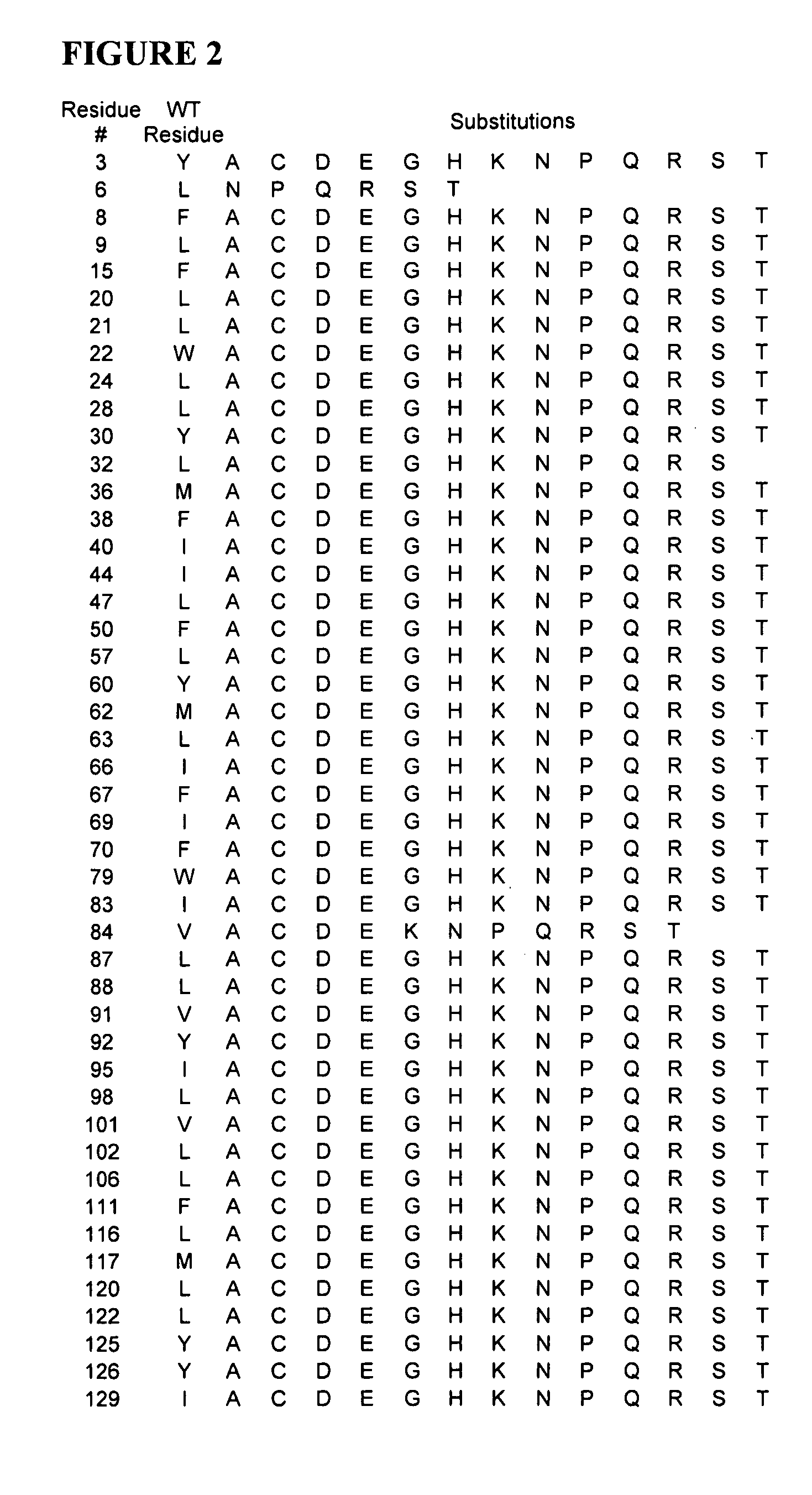Modified interferon beta with reduced immunogenicity
a technology of interferon beta and immunogenicity, applied in the field of polypeptides, can solve the problems of limited therapeutic protein efficacy and the inability of peptides to function as t-cell epitopes in all situations
- Summary
- Abstract
- Description
- Claims
- Application Information
AI Technical Summary
Benefits of technology
Problems solved by technology
Method used
Image
Examples
example 1
[0098]There are a number of factors that play important roles in determining the total structure of a protein or polypeptide. First, the peptide bond, i.e., that bond which joins the amino acids in the chain together, is a covalent bond. This bond is planar in structure, essentially a substituted amide. An “amide” is any of a group of organic compounds containing the grouping —CONH—.
[0099]The planar peptide bond linking Cα of adjacent amino acids may be represented as depicted below:
[0100]Because the O═C and the C—N atoms lie in a relatively rigid plane, free rotation does not occur about these axes. Hence, a plane schematically depicted by the interrupted line is sometimes referred to as an “amide” or “peptide plane” plane wherein lie the oxygen (O), carbon (C), nitrogen (N), and hydrogen (H) atoms of the peptide backbone. At opposite corners of this amide plane are located the Cα atoms. Since there is substantially no rotation about the O═C and C—N atoms in the peptide or amide pl...
example 2
[0160]The interaction between MHC, peptide and T-cell receptor (TCR) provides the structural basis for the antigen specificity of T-cell recognition. T-cell proliferation assays test the binding of peptides to MHC and the recognition of MHC / peptide complexes by the TCR. In vitro T-cell proliferation assays of the present example, involve the stimulation of peripheral blood mononuclear cells (PBMCs), containing antigen presenting cells (APCs) and T-cells. Stimulation is conducted in vitro using synthetic peptide antigens, and in some experiments whole protein antigen. Stimulated T-cell proliferation is measured using 3H-thymidine (3H-Thy) and the presence of incorporated 3H-Thy assessed using scintillation counting of washed fixed cells.
[0161]Buffy coats from human blood stored for less than 12 hours were obtained from the National Blood Service (Addenbrooks Hospital, Cambridge, UK). Ficoll-paque was obtained from Amersham Pharmacia Biotech (Amersham, UK). Serum free AIM V media for ...
example 3
[0165]A number of modified INFβ molecules were made using conventional recombinant DNA techniques. A wild-type INFβ gene was used both as a control reagent, and a template from which to derive modified genes by site-directed mutagenesis. Wild-type and modified genes were inserted into a eukaryotic expression vector and the recombinant INFβ proteins expressed as fusion protein with the human immunoglobulin constant region domain. Recombinant proteins were prepared from transiently transfected human embryonic kidney cells and assayed as detailed in EXAMPLE 4.
[0166]In order to obtain expression from human embryonic kidney cells, the wild-type human INFβgene was obtained from the American Type Culture Collection (ATCC, accession no. 31902) and PCR cloned into vector pd-Cs (Lo, et al. (1998), Protein Engineering 11: 495). The pd-Cs vector directs the expression of a fusion protein containing the human immunoglobulin constant region domain. The pd-Cs vector containing the wild-type INFβ g...
PUM
 Login to View More
Login to View More Abstract
Description
Claims
Application Information
 Login to View More
Login to View More - R&D
- Intellectual Property
- Life Sciences
- Materials
- Tech Scout
- Unparalleled Data Quality
- Higher Quality Content
- 60% Fewer Hallucinations
Browse by: Latest US Patents, China's latest patents, Technical Efficacy Thesaurus, Application Domain, Technology Topic, Popular Technical Reports.
© 2025 PatSnap. All rights reserved.Legal|Privacy policy|Modern Slavery Act Transparency Statement|Sitemap|About US| Contact US: help@patsnap.com



